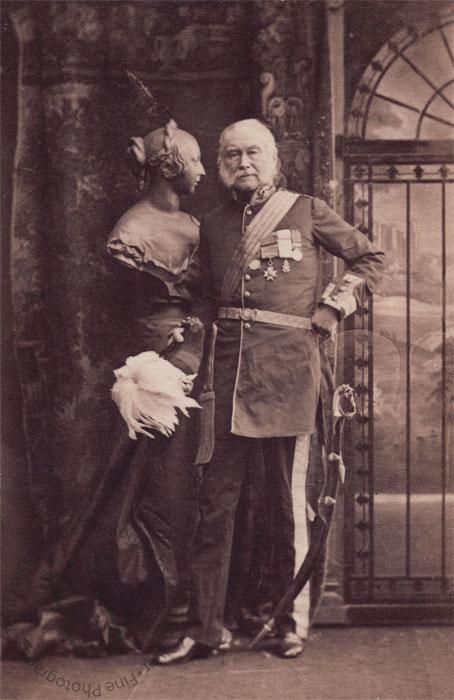General Clark Kennedy
(1783-1864)
9 March 1861
Volume 2, page 284, sitting number 2425.
Lieutenant-General Alexander Kennedy Clark Kennedy is listed in Hart’s Army List (1860) as the Colonel of the 2nd (Royal North British) Regiment of Dragoons. He entered the Army as a Cornet (by purchase) on 8 September 1802.
‘Sir Alexander served in the Peninsula with the Royal Dragoons from Sept. 1809 to Oct. 1813, including the battle of Busaco, covering the retreat to Torres Vedras, affair at Quinta de Torre, battle of Fuentes d’Onor (horse struck down by shell), blockade of Almeida, actions at Nave d’Aver, Fuente Guinalde, and Aldea de Ponte (appointed Brigade-Major to Gen. Slade); covering the Siege of Ciudad Rodrigo, selected to command a party of Cavalry advanced to watch and report the enemy’s movements during the siege of Badajoz, for which he was thanked by Lord Lynedoch; engaged with a body of French Infantry under General Clausel, near Salamanca, battle of Vittoria, blockade of Pampeluna, besides various skirmishes and affairs of outposts. Campaign of 1815 – covering the retreat on the 17th June and battle of Waterloo (received two wounds and had two horses killed under him). Whilst leading his squadron in a successful charge against Count d’Erlon’s corps at Waterloo, perceiving an Eagle to the left, he changed the direction of his squadron, ran the officer through the body who carried it, and captured the Eagle, which belonged to the 105th French Regiment of Infantry, and is now deposited in the Chelsea Hospital. Had received the War Medal with two clasps' (Naval & Military Gazette and Weekly Chronicle of the United Service, 6 February 1864).
Lieutenant-General Alexander Clark Kennedy, KCB and KH, of Knockgray in the County of Kirkcudbrightshire, Colonel of the Scots Greys, died, aged 81, on 30 January 1864 at 69 Oxford Terrace, Hyde Park, London. He left an estate valued at £6000.

